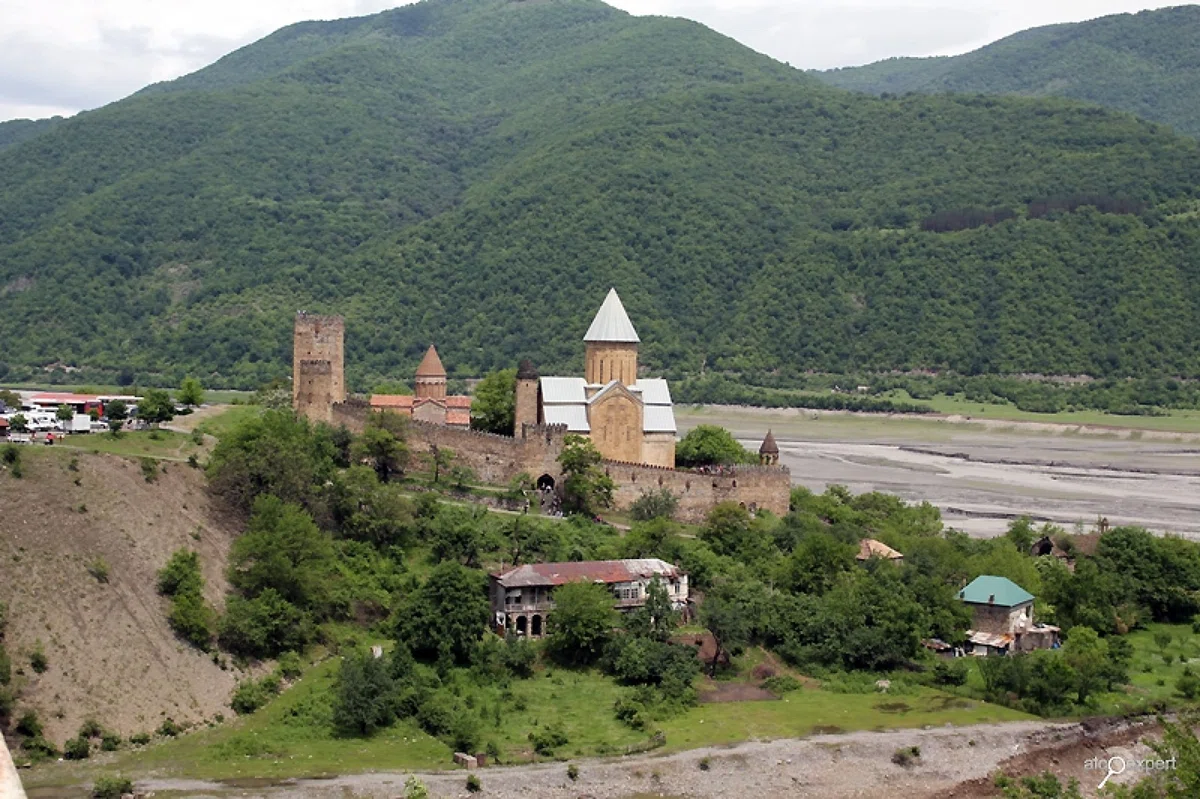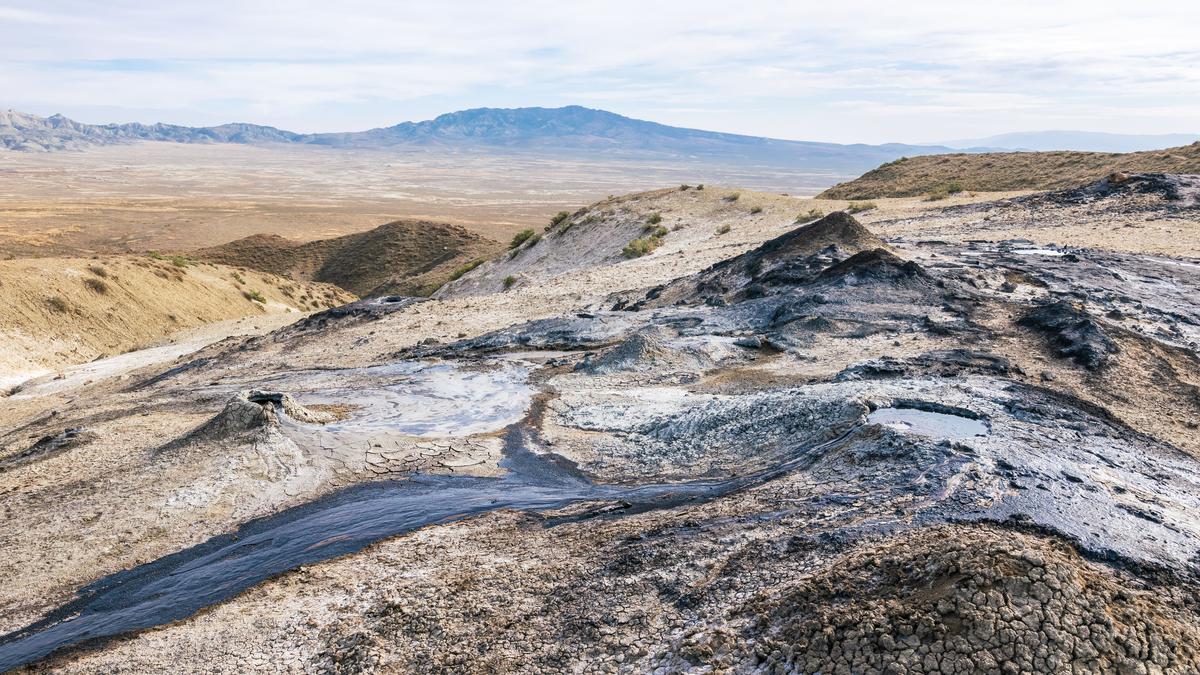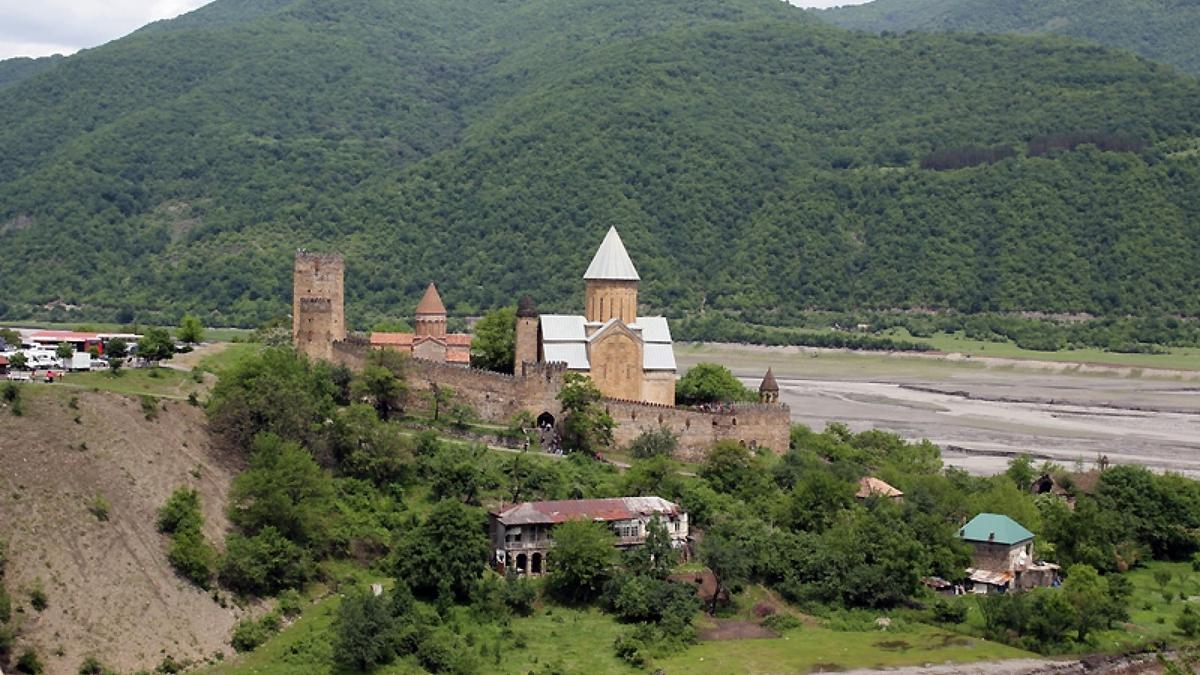
The most beautiful natural places in Georgia. Visit the place of Ascan.
In the vicinity of Askana there is a natural clay, which was formed as a result of volcanic ash falling into seawater. The useful properties of such clays have been known for a very long time. These clays have been of interest to the population and tourists for a long time. The name of the clay is Ascanite, the deposits of which are estimated at 10 million tons.
Askana is located in the municipality of Ozurgeti, on the right slope of the narrow gorge of Bakhvistskali. The name is associated with the name of Ascan, who was a descendant of the god of winemaking Bacchus.
There is another version: during the epidemic spread in Guria, only the inhabitants of this village remained alive. For this they were nicknamed "Ascaniani", which in Russian means "having a hundred skins".
ASKANA
As a result of the precipitation of ash from underwater volcanoes mixed with sea water, clay appeared on the territory of the village of Mtispiri. The local population used clay to wash their hair, and also sold it. In 1916, geologist Alexander Tvalchrelidze saw this clay at the bazaar and realized that he was looking at a valuable sedimentary rock. This kind of clay was called ascanite.
Clay mines in Mtispiri became seriously interested in the middle of the XX century. In 1952-59, a clay mining and processing plant was built. This plant produced two types of products: bentonite for the production of wines and clay for the production of templates. Today bentonites are used in the manufacture of clay solutions, which are used during the laying of test and production wells. They are also used in the manufacture of paper, in the food and textile industries, as well as in many branches of agriculture. In medicine, the drug bentobol is known, Ascan clay tablets made from Ascan bentonite clay. It is used for irritation of the gastric mucosa.
The reserves of Ascanite deposits amounted to 10 million tons. Today, half of these reserves remain. To the southwest of the clay quarries there are unique mud and sulfur water, which were discovered in 1945 and immediately became known for their unique medicinal properties.
Location: the northern slope of the Meskheti ridge, the valley of the Bakhvistskali river.
Distance: from Ozurgeti - 17 km, from Tbilisi – 333 km.
Height above sea level: 173 m.
Climate: subtropical. Winter is mild, snowless. The average temperature in January is 4.3 °C. From mid-December to the end of March there is snow. Summer is warm and humid. The average temperature in August is 21.8°C.
Average annual precipitation: 1880 mm.
Average relative humidity per year: 75%.
Duration of sunshine per year: 1880-1900 hours.


Askana is a village in Georgia, which is not only a habitat for locals, but also a unique place for fans of healthy lifestyle and eco-tourism. Askanit clay, which is found in this region, attracts the attention of both residents of Georgia and tourists from all over the world. The local clay has a number of beneficial properties, such as rejuvenation of the skin, elimination of muscle and joint pains, and treatment of skin diseases. In addition, in the surrounding area you can hike through the picturesque countryside, visit monasteries and churches, enjoy Georgian cuisine and buy handicrafts of local craftsmen.
Interestingly, the name Askanit was not given by chance. In ancient times, the god of wine Bacchus was considered one of the main gods of Greece and Rome, and was also known as the god of summer and fertility. In Georgia, where grapes and wine are also prized, the name of this god was familiar, and his descendant, Askan, became the name for the unique clay. Another interesting fact is that it preserved ancient traditions and customs, including holidays. One of the most famous festivals is "Lagerni", which takes place at the beginning of spring. On this day the locals meet the dawn in the mountains, gather together, dance and celebrate the approach of spring. One of the interesting places to visit in the valley of the river Bahvistskali on the northern slope of the Meskheti range is the village Tsekeri. This small village, located in a picturesque place, is known for its beautiful landscapes and unique architectural monuments. In this village there is one of the oldest churches of Georgia - St. George Church, which was built back in the VI century. It is an example of typical Georgian cross-domed architecture. Around the church you can see the ruins of the ancient city that was here before the arrival of Christianity. Also in the village there is a museum of folk life, where you can learn about the traditional culture and life of local people. The museum shows old household items, handicrafts and tools that were used by local people many years ago.
There are also plenty of great places for hiking and picnicking in the river valley. You can also go fishing - the river is home to many species of fish, including carp, pike, flounder, and others. In the river valley you can see a variety of flora and fauna. There are different kinds of animals, including wolves, foxes, hares, squirrels, roe deer and wild boar. Also here you can find rare species of plants, such as snakehead and many others. Despite the fact that the climate in the river valley is subtropical, in winter you can see a unique phenomenon - icefalls. Waterfalls, which usually flow along the ridges, freeze, forming amazing sculptures of ice and snow.
After visiting the valley of the Bahvistskali River, it is worth going to explore the local attractions. In the area there is an ancient fortress Sumerlo, founded in the V century, which for many centuries played an important role in the history of Georgia. There are also monasteries and churches nearby, such as the Shurahe Monastery, founded in the 11th century, and the Church of St. George in the village of Midjikendi, dating back to the late 10th century.
Finally, for lovers of outdoor activities in the river valley there is the opportunity to go rafting and kayaking on the fast streams of the river. These sports provide an opportunity to test their strength and enjoy the beautiful views of nature.
Thus, the area is a great place for tourists who want to enjoy the beauty of Georgian nature, history and culture, as well as for those who are looking for an active holiday. Ascanite and clay from Mtispiri are important economic and cultural symbols of the region. They are not only valuable for scientific research, but also serve as a source of pride for the local population and attract tourists from all over the world.
Readers are welcome to leave comments under the article and ask questions. If you have already visited Askana, tell us about your impressions and experiences with the clay.












41 comments
Log in to leave a comment
Я уже посетил Мтиспири и имел возможность увидеть эти глиняные рудники и их окружающую природу. Было впечатляюще узнать о значимости асканита и его разнообразном применении. Это место сочетает в себе природные ресурсы и лечебные свойства, что делает его особенным. Рекомендую всем, кто интересуется уникальными природными материалами и их использованием, посетить Мтиспири и исследовать все, что оно может предложить.
но.Местные жители использовали её для мытья головы и продавали её на рынке.А.Твалчрелидзе увидел на базаре эту глину и понял, что пе-
ред ним ценная осадочная порода.Глину используют в разных отраслях промышленности, а в медицине известный препарат бентабол, он при-
меняется при раздражении слизистой оболочки желудка.К юго-западу от карьеров есть уникальные грязи и серная вода, они были обнаружены в 1945 го-
ду и стали известны из-за своих лечебных свойств.Вот так удивляет разнообразие в Грузии полезных ископаемых,а ведь люди знали целебные свойства глины уже очень давно.Потрясающе!
Вот интересно везде написано про лечебные источники грязи и серной воды, но подробного описания, чем полезны не написано. Там какой то курорт или санаторий находится? Как на эти источники можно попасть? И сколько приблизительно стоит?
соединяющий крепость с долиной Бахвисцкали."